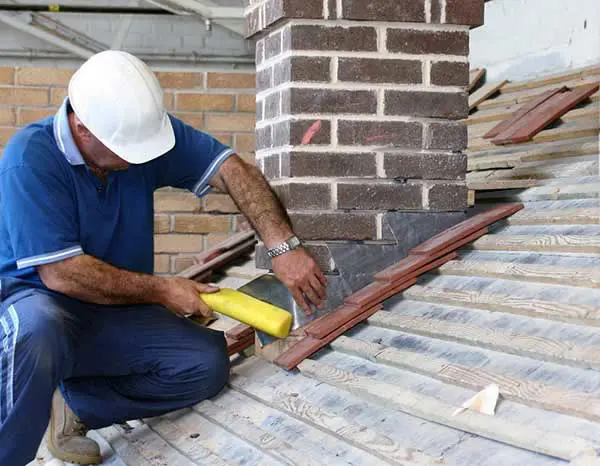Roof flashing is critical in preventing leaks.
Unless your roofing contractor understands the importance of flashing, it’s easy for unskilled workers to cut corners and improperly install it, leaving your roof and your home at risk.
Mother nature can be unforgiving. You want your roof to stand up to the task of protecting your home against water damage for the full length of its projected life span.
Flashing Adds Layers of Protection
The purpose of flashing is to keep water out. If you have no fitted flashing around openings in the roof, water will run down the sides of pipe vents and chimneys and continue into your home, causing widespread damage.
Also, if you have a pitched roof with multiple surfaces, you need flashing installed in the valley — the seam that runs in between the slopes. This ensures that water will run down toward the rain gutters.
Since water is always moving downward, flashing is never installed with seams facing up. It’s positioned in layers so that no water is trapped or has a chance to be absorbed into the roofing materials.
What Is it Made Of?
Roof flashing is commonly made of aluminum because it’s affordable, durable and easily moldable into the required shape. Galvanized steel is another common roof flashing material because of its low cost. Polyvinyl chloride, or PVC, is also used because it is moldable and cost-effective, and copper and lead are still other choices.
It’s only Effective if Installed Correctly
When your roof is replaced, the flashing will be installed before the shingles. An experienced roofer knows that for it to be the most effective, it has to be custom fit and cut. Roofers nail down the flashing, then apply a waterproof sealant to the edges.
While expert installation jobs won’t require many repairs going forward, strong winds and minor roof damage can cause flashing to come loose. It may not have to be replaced, but it will definitely have to be refastened and resealed. If you notice missing shingles around flashing or see that any part of the flashing is detached or missing, call a professional for a repair fast.
Ultimately, flashing is designed to redirect and deflect water from your roof’s joints and seams. Without it, water can infiltrate the decking, seep into the insulation, drip onto drywall and stain your walls and ceilings. Mold and rot won’t be far behind.
When you’re talking to a roofing contractor about having your roof replaced, make sure you ask them about where they believe roof flashing would be the most effective on your roof. Call the Roof Doctor today for repairs, replacements and a free quote for any project.

